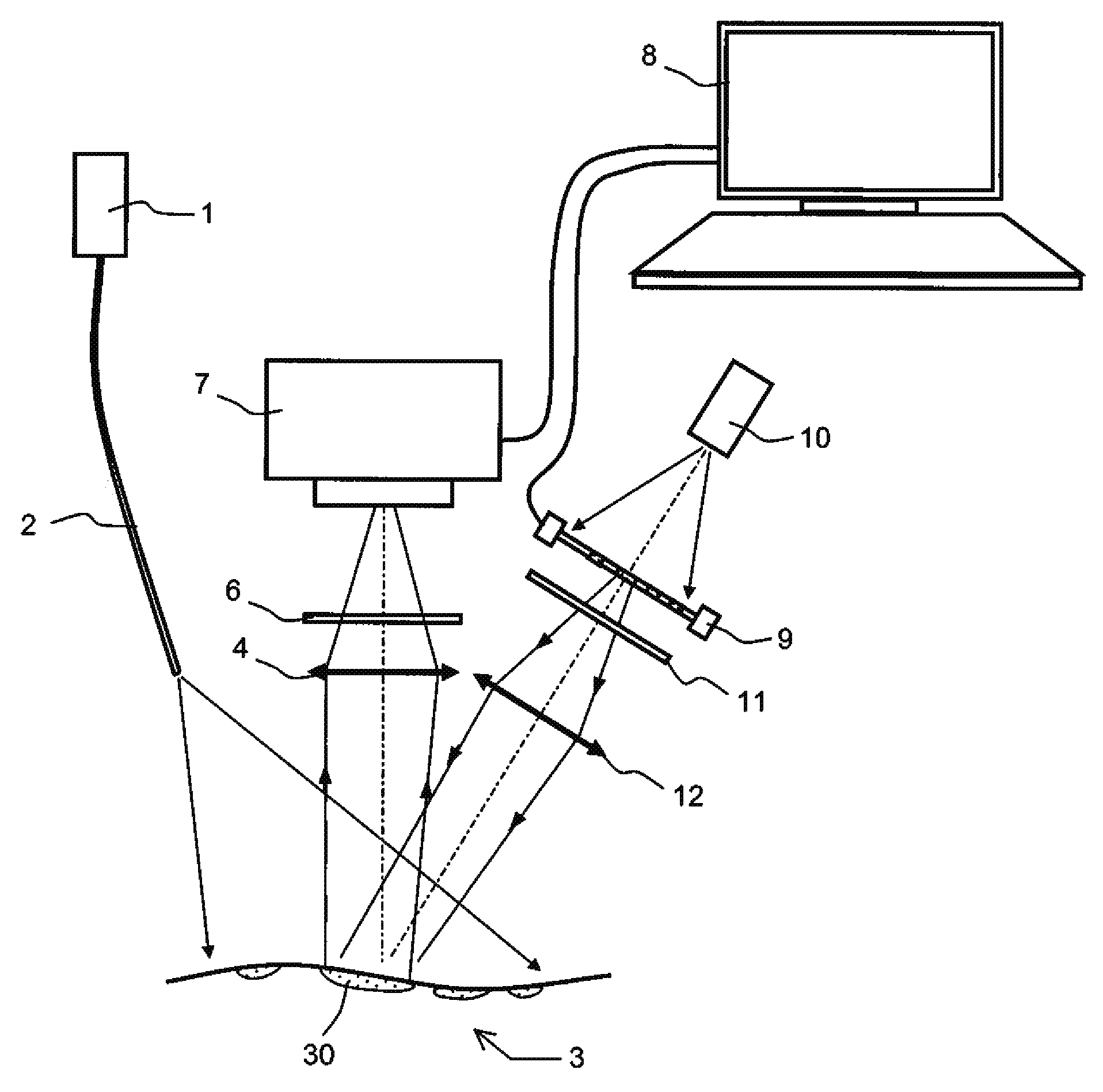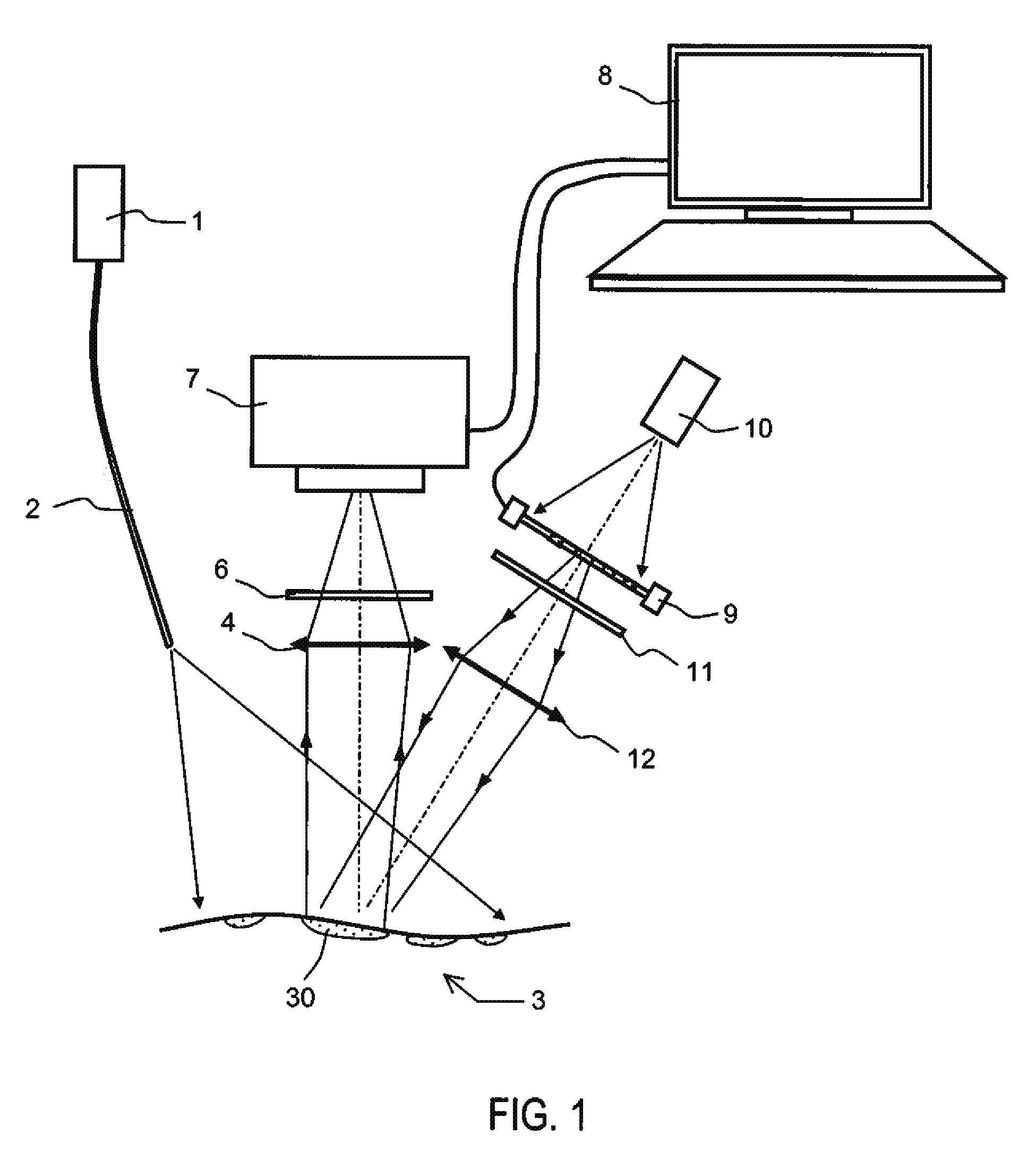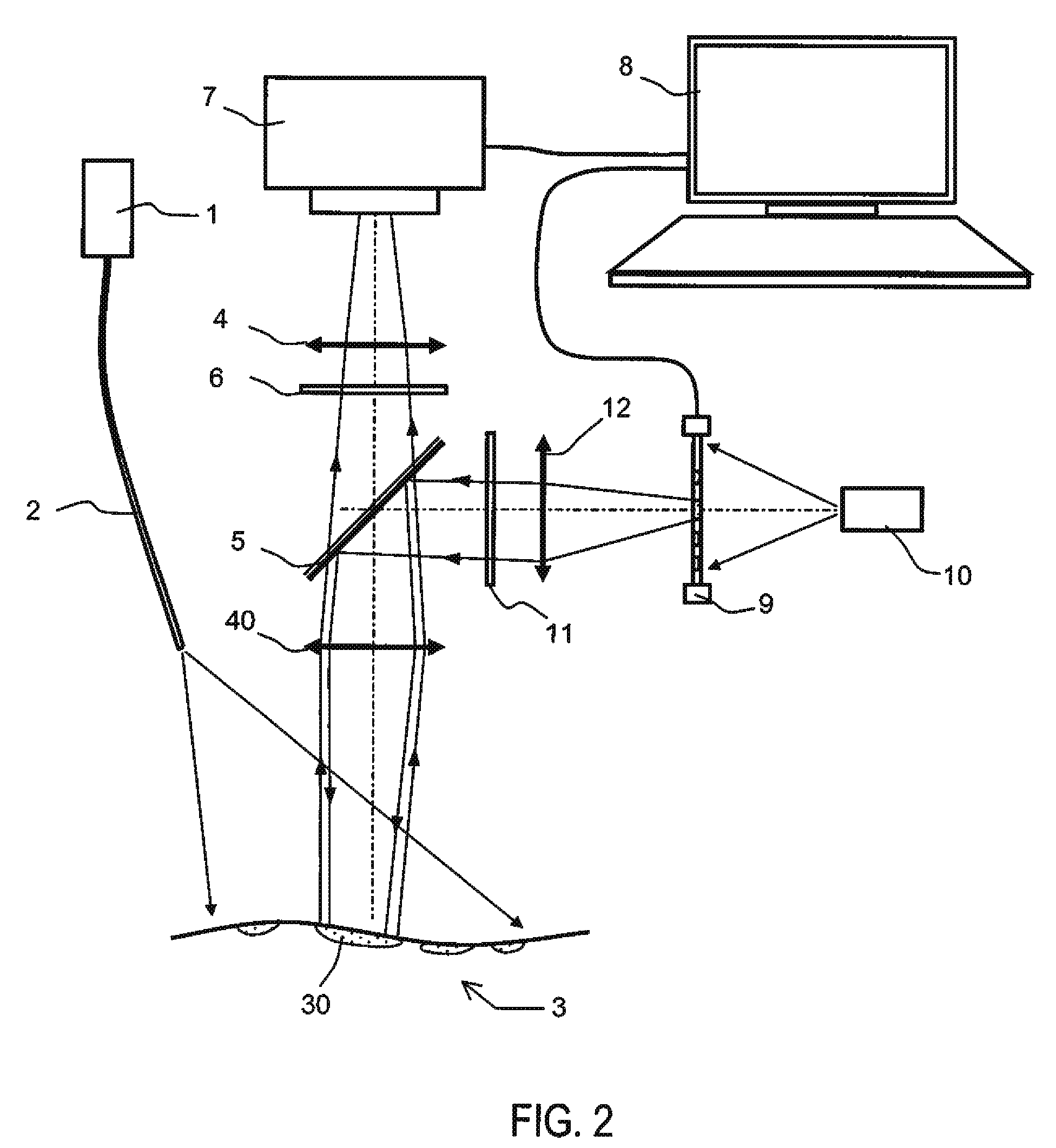Bispectral peroperative optical probe
- Summary
- Abstract
- Description
- Claims
- Application Information
AI Technical Summary
Benefits of technology
Problems solved by technology
Method used
Image
Examples
first embodiment
[0044]FIG. 1 is a schematic representation of a probe according to the invention, designed according to the It comprises essentially the elements described below.
[0045]A first light source 1 emits a first light beam intended to illuminate a biological tissue surface 3, of which at least one area 30, the marked area, has previously been fixed by a fluorescent marker. The techniques for marking living tissue are well known, moreover, and do not fall within the scope of this description. The beam must be emitted at a first wavelength corresponding substantially to the wavelength of excitation of the marking fluorophore. This effect can be obtained using various sources. Thus, the source can be a laser, a light-emitting diode or an incandescent lamp. It can comprise auxiliary optical devices for guiding or directing the light beam in order to improve its light distribution on the illuminated surface. Thus, by way of example, FIG. 1 shows a fibre optic 2 permitting transport of light fr...
second embodiment
[0062]a probe according to the invention is depicted in FIGS. 3 and 4. The probe in FIG. 3 comprises essentially the elements described below:
[0063]A first light source 1 emitting a first light beam intended to illuminate a biological tissue surface 3 at a first wavelength. Under the effect of the excitation light, the fluorophore emits at a second wavelength.
[0064]A first optical device of the camera type, comprising a first lens 4 and a photosensitive surface 7, forms a first image of the biological tissue surface 3 on the photosensitive surface 7. As in the preceding embodiments, this first device can comprise a filter 6.
[0065]This first image can be processed by suitable image-processing means 8 with which it is possible to reveal the marked areas present in the image and to display them on a computer screen or a monitor.
[0066]A second optical device comprising at least a second light source 13 emitting a second beam at the first wavelength and arranged in such a way as to illum...
PUM
 Login to View More
Login to View More Abstract
Description
Claims
Application Information
 Login to View More
Login to View More - R&D
- Intellectual Property
- Life Sciences
- Materials
- Tech Scout
- Unparalleled Data Quality
- Higher Quality Content
- 60% Fewer Hallucinations
Browse by: Latest US Patents, China's latest patents, Technical Efficacy Thesaurus, Application Domain, Technology Topic, Popular Technical Reports.
© 2025 PatSnap. All rights reserved.Legal|Privacy policy|Modern Slavery Act Transparency Statement|Sitemap|About US| Contact US: help@patsnap.com



